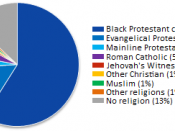In the late 1800's, the evolving United States did not have that great of living conditions, especially for a Native American, immigrant, or African-American. Forced from their rightful lands, Native Americans were brutally marched to reservations. The new immigrants suffered a tremendous deal of persecution and a poor quality of life living in the packed cities. Even though African Americans had been constitutionally declared citizens and equals, the South was still segregated and blacks couldn't vote.
As settlers pushed west, and the population grew, Native Americans were forced from their homelands and into the frontier. This was legal because of the "Indian Removal Act" of 1830, signed by President Jackson. In attempt to save themselves and their homes, the Native Americans formed an independent Cherokee nation and tried to fight the Supreme Court. America shut this down quickly, arguing that they were not a sovereign nation and refused to hear their case in court.
Indians were relocated into the brutal west.
Because so many Americans opposed the Indian Removal Act, the country tried to redeem its self with the Dawes Act of 1887. As a 'privilege', each Indian family was to be given 160 acres of land to farm. Americans didn't consider that the Indians were not farmers and couldn't cultivate the land well, especially with out tools. Native American health issues were neglected with lack of medical attention, and education was offered by a poorly trained teacher speaking only English. The Dawes Act was a total failure to the Indian lifestyle.
Just getting into the United States was a grueling task for immigrants. For example, when Ellis Island opened in 1892, every immigrant coming to America had to pass through its doors. In one day, up to 10,000 foreigners seeking citizenship would be processed through.


